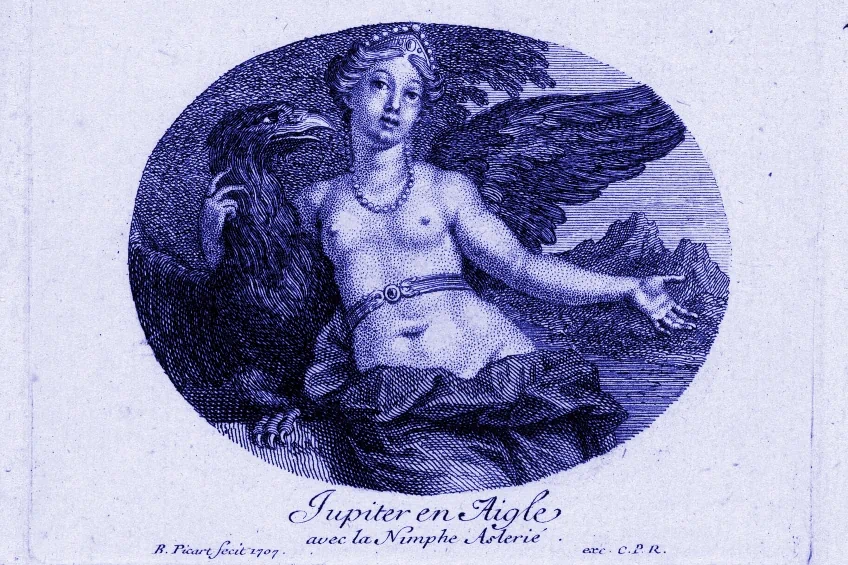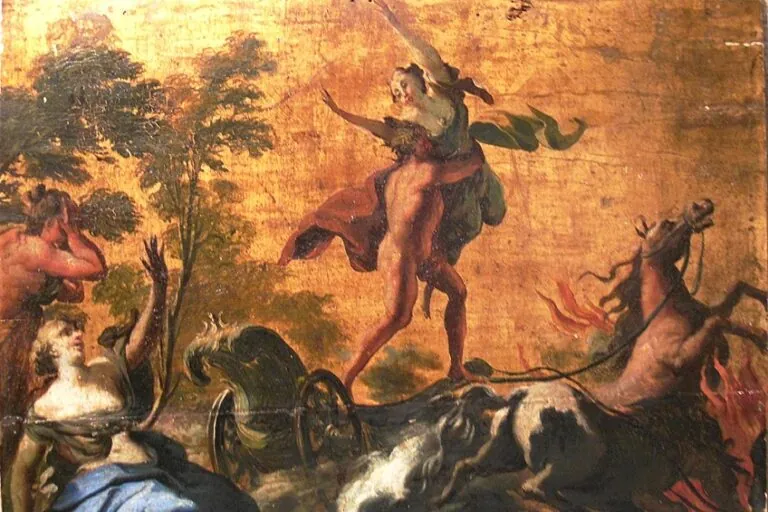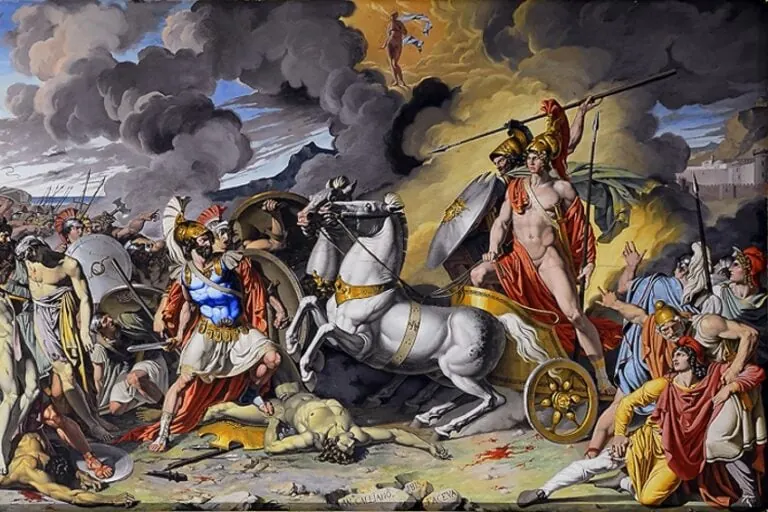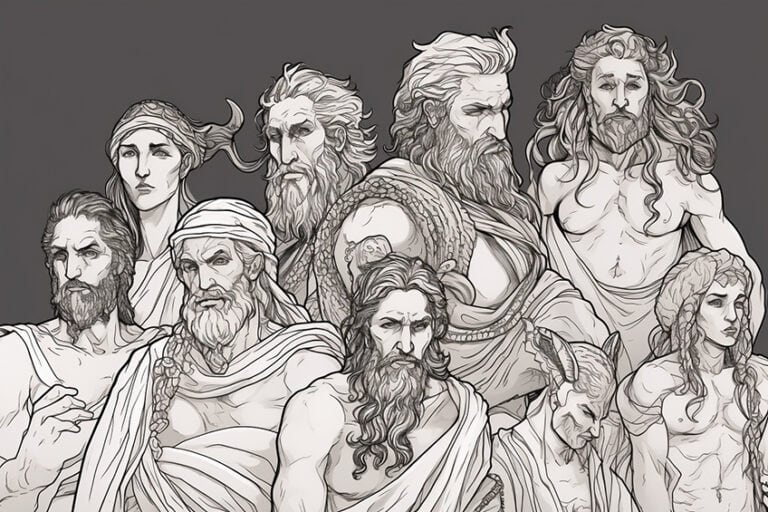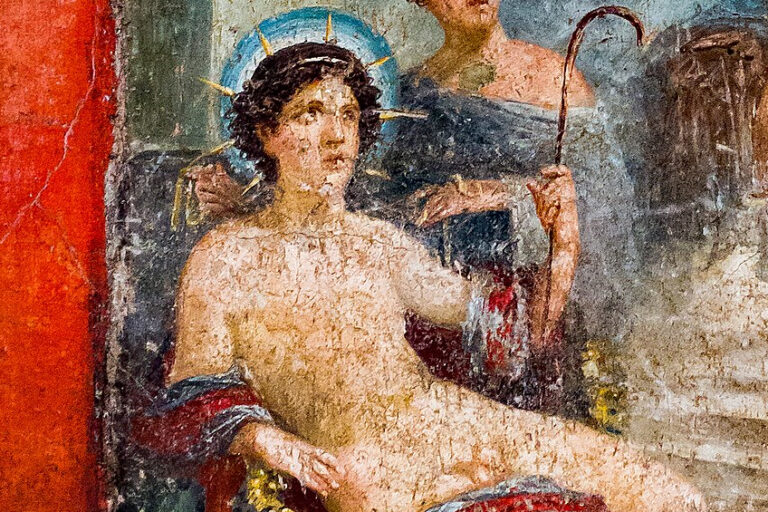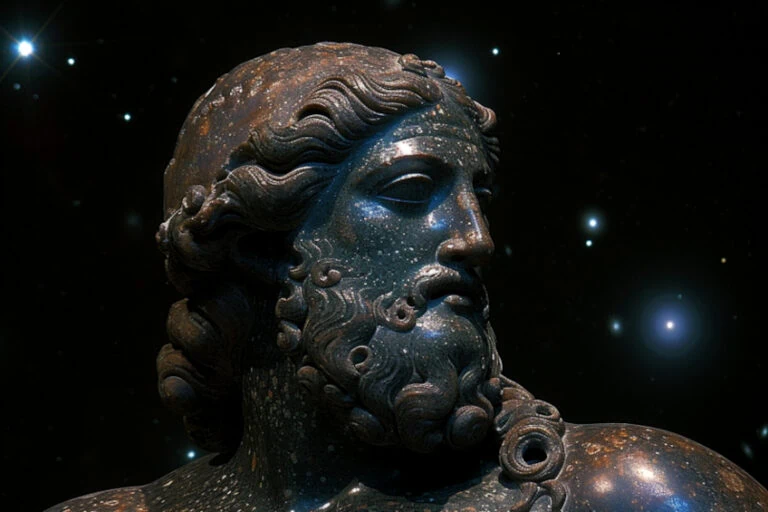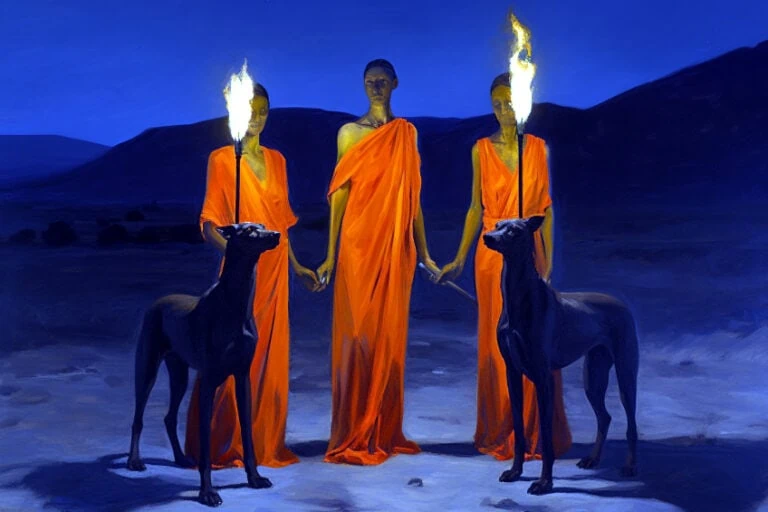Greek Goddess Asteria – The Titaness Who Became an Island
Did you know that shooting stars have a goddess all of their own in Greek mythology? The Greek goddess Asteria was a Titan beloved by Zeus and honored above all by Apollo. She is believed to be the very foundation of one of the most important cultural sites in Greek history, the Isle of Delos in the Aegean Sea, and wielder of mysterious magics and the oracular powers of night. Find out more about Asteria and why she shines in Greek myth below!
Contents
Overview of the Titaness Asteria
| Name | Asteria, Delos, or Ortygia |
| Gender | Female |
| God of | Falling stars and the isle of Delos |
| Personality | Brave, decisive, and noble |
| Symbols | Quail |
| Consorts | Perses |
| Children | Hekate |
| Parents | Koios and Phoebe |
Asteria is a Greek goddess of little surviving renown or clear documentation, though she endures in her role as an origin point for the much worshiped Greek god Apollo and the sacredness of the historic isle of Delos.
What we do know of Asteria is mostly through commonly conflated sources and her attributed myths, which have painted her as a virtuous and wise figure in Greek mythology.
Asteria’s Background and Family
The Greek goddess Asteria was considered by the ancient Greeks to be one of the second-generation Titans of the ancient Greek mythos. Her name comes from the Greek word ‘ἀστήρ’, or ‘astḗr’ meaning “star”, and she is associated with falling stars. While little is known about her directly, she is an interesting character and plays a foundational role in the mythos of the Olympian Apollo and his sister to a lesser extent. She is believed to be the isle of Delos, reported as the birthplace and most honored land of Apollo which was an important cultural center in the Aegean sea.
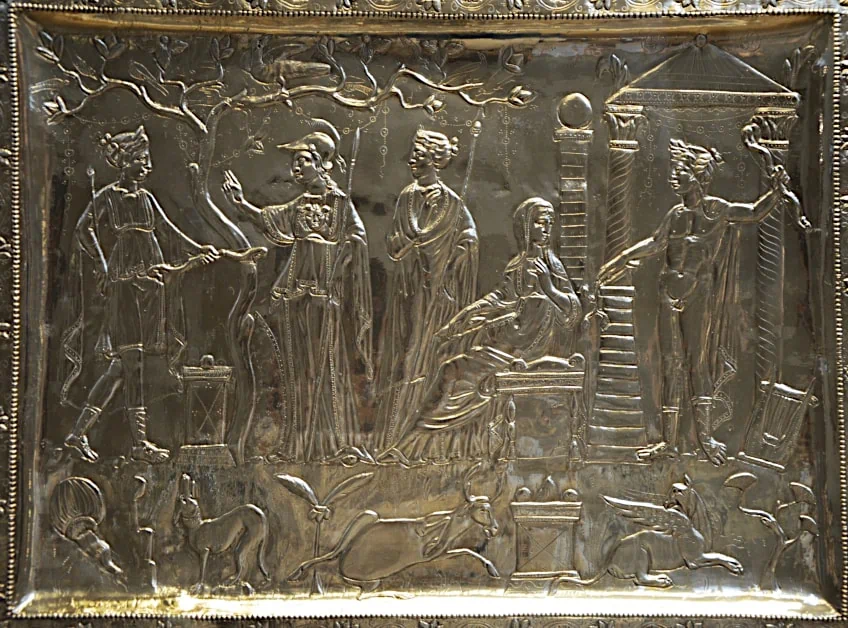 Silver Roman display plate showing from left Artemis, Athena, Ortygia/Asteria, Leto, and Apollo (4th Century CE); Carole Raddato from FRANKFURT, Germany, CC BY-SA 2.0, via Wikimedia Commons
Silver Roman display plate showing from left Artemis, Athena, Ortygia/Asteria, Leto, and Apollo (4th Century CE); Carole Raddato from FRANKFURT, Germany, CC BY-SA 2.0, via Wikimedia Commons
The Family of Asteria
Asteria is a second-generation Titan as the daughter of the Titans Koios, also known as Coeus or Polus, and the Titan Phoebe. She is commonly noted as being married to the Titan Perses, her cousin through her uncle Krios and her aunt Eurybia.
Her most important relations are with her sister the goddess Leto, and her nephew and niece who are the Olympians known as Apollo and Artemis respectively.
Her other great connection is to the goddess Hekate, the goddess of witchcraft, who is reputedly her daughter by her husband Perses. Some other authors, who also call Hekate her daughter, have named Zeus as the father. Cicero even described her as having borne Zeus the fourth Hercules though this is not considered common tradition.
 Attic black-glazed Oichonoe with a depiction of Hekate holding two torches and dancing in front of an altar and cult image (c. 350-300 BCE); British Museum, Public domain, via Wikimedia Commons
Attic black-glazed Oichonoe with a depiction of Hekate holding two torches and dancing in front of an altar and cult image (c. 350-300 BCE); British Museum, Public domain, via Wikimedia Commons
The Significance of Asteria in Greek Mythology
Genealogically she is the mother of the goddess Hekate, a key player in Greek mythology with an impressive cult following in ancient Greek life. Some ascribe this Titaness as being the source of Hekate’s knowledge of night magics and divination. Her mythos holds that she threw herself or was thrown into the sea and her name meaning ‘star’ or ‘of the stars’ makes her into a figurative falling star and this argument can be made when adding her common description as the Titaness of ‘falling stars’ and the belief that they are manifestations of her influence on the night sky.
To the Romans, falling stars represented divine messages and omens of the future, and more firmly adds meteorites to the list when considering what is Asteria the goddess of.
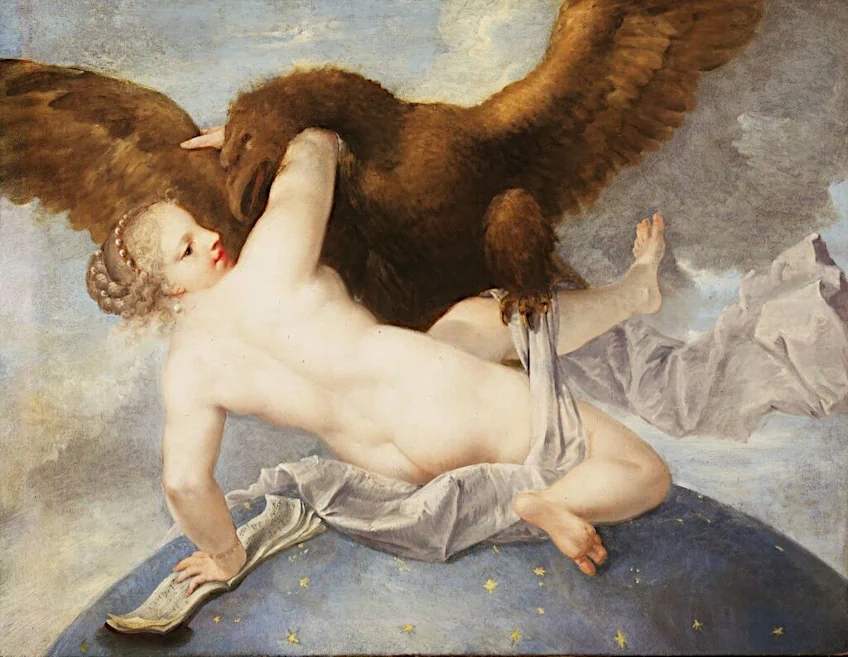 Jupiter (Zeus) and Asteria, by Marco Liberi (2nd half of the 17th Century); Marco Liberi, Public domain, via Wikimedia Commons
Jupiter (Zeus) and Asteria, by Marco Liberi (2nd half of the 17th Century); Marco Liberi, Public domain, via Wikimedia Commons
Her name and close family relations show strong celestial associations and some suggested power over divinations, by both the stars and through dreams. She may have also been associated with Brizo, a mysterious goddess of slumber and prophetic dreams worshiped on the island. Asteria herself is held as having power as a Titaness and being the source of Hekate’s instruction in magic and her power over the sky, sea, and earth.
In mythology, however, Asteria is a key player in explaining the birth of both the god Apollo and the ‘origins’ of the Isle Delos and why it is so sacred to him.
It is held that she and her sister Leto had places on Mount Olympians after the Titanomachy. Zeus in his desire for Asteria, chased after her despite her rejection of his advances. Asteria turned herself into a quail during her flight and threw herself, or was thrown by an angered Zeus, into the sea. Some say she was further chased by Poseidon, but she is said to have turned herself into the floating island of Delos. This becomes important when Zeus impregnates Leto.
 Phoebe and Asteria shown fighting Giants on the frieze of the Great Altar at Pergamon (1st half of the 2nd Century BCE); Miguel Hermoso Cuesta, CC BY-SA 4.0, via Wikimedia Commons
Phoebe and Asteria shown fighting Giants on the frieze of the Great Altar at Pergamon (1st half of the 2nd Century BCE); Miguel Hermoso Cuesta, CC BY-SA 4.0, via Wikimedia Commons
An enraged Hera forbade Leto from giving birth on any land and set the monster Python after her. Leto winds up on the isle of Delos, either using the north wind Boreas sent by Zeus or through Apollo’s own instruction. Delos offers her sanctuary, in defiance of Hera, and in return receives a divine oath that Apollo shall hold her as the most beloved of lands and she shall have his temple with many people and offerings on her bare, rocky island. Upon striking the deal, four adamantine-based pillars rose where Leto finally gave birth and Apollo fixed Delos in place to wander the harsh seas no more, the waves became calm, and Delos became a most sacred island.
Its history as a holy sanctuary, with its abundance of altars and sacred dedications, has made it an important archeological site and in 1990 UNESCO made it a part of the World Heritage List due to its influential role in history, architecture, and ancient Greek belief.
While it is unknown which side Asteria chose in the Titanomachy, Asteria later fights alongside the Olympians against the giants in the Gigantomachy, as she is depicted in the Pergamon frieze alongside her mother Phoebe.
Asteria’s Attributes and Attitudes
Descriptions of Asteria are few and far between. Her appearance is noted as beautiful which explains the fervid pursuit of the gods Zeus and Poseidon, and her association with the night sky and being a goddess of the stars means she is usually depicted with them in shining glory.
Her mythos displays her as someone principled, following her own thoughts with courage and decisiveness. She is shown as someone who will make the hard choices.
Her fleeing from Zeus and transforming into a somewhat barren island to get away from him in order to not ‘interfere’ with Hera’s marriage shows not only bravery and loyalty but also quick wit and determination. In the myths where Asteria as Delos is Leto’s sister, one can see her compassion and loyalty. Hera has scorned many of Zeus’ conquests whether they wished for his pursuit or not, however, even she recognized the lengths Asteria went to in order to avoid her marriage bed.
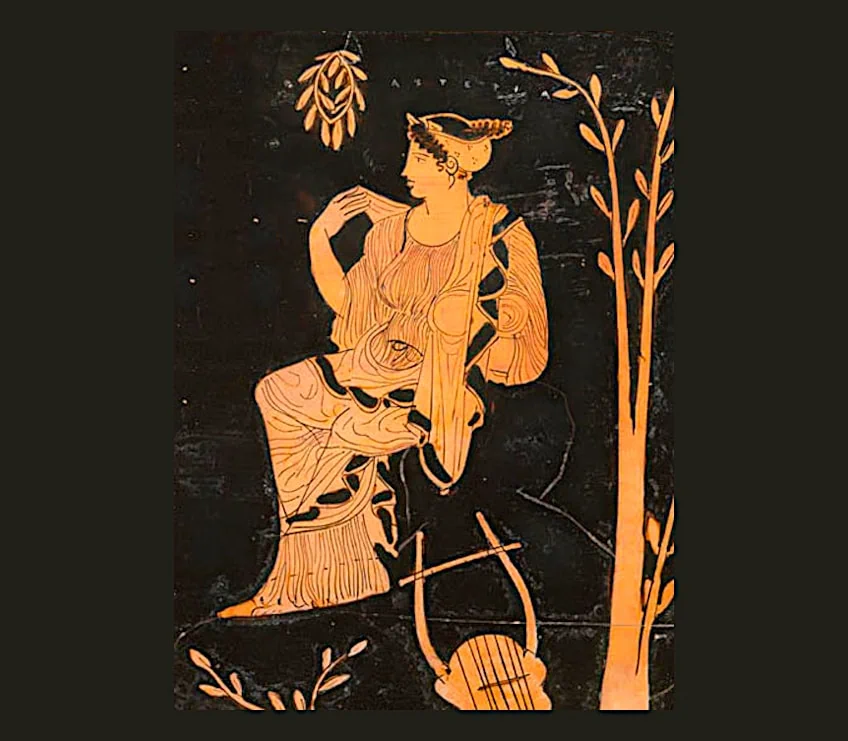 Attic red-figure amphora with a depiction of Asteria (c. 400 BCE); Attributed to the Kadmos Painter, Public domain, via Wikimedia Commons
Attic red-figure amphora with a depiction of Asteria (c. 400 BCE); Attributed to the Kadmos Painter, Public domain, via Wikimedia Commons
Hera herself acknowledges that even though Asteria aided Leto against her orders, she owes Asteria who suffered to avoid Zeus. Now some writings make no mention of Asteria and Leto as sisters, in which case it is the isle of Delos’ compassion for a fellow wanderer, and quick thinking striking a divine deal, that seals her status as sacred to Apollo and ends her days of being thrown about by the waves. There is steadfast bravery in Asteria, the beautiful Titaness whose great power is slightly overshadowed by the greater guts and principles required to defy the most powerful gods around without hesitation for what she believes in.
She is not afraid of doing what she feels she must, regardless of the consequences, an admirable trait even without the nobility evident in her actions.
Symbols Sacred to the Greek Goddess Asteria
Her primary symbol, aside from the isle of Delos itself and falling stars, is the quail, which she turned herself into as she fled from Zeus. The quail was a sacred bird, and it was forbidden to hunt them. They were often used in art for various reasons, such as a symbol of victory, bravery, and freedom. They were also associated with Athena, Artemis, and Apollo.
Some sources hold that Artemis was born on the isle of Ortygia, which is derived from the Greek word ‘ortux’ meaning ‘quail’. As Artemis was sometimes considered Apollo’s twin it was said that the Isle of Delos was first named Ortygia before it got the name Delos.
Apollo was said to have sent a flock of quail as part of a divine punishment to an African princess. As an animal, quails are known for their survival, bravery, determination, and fierce loyalty to and protection of their familial units and young. These traits match what we know of Asteria’s mythos exceedingly well.
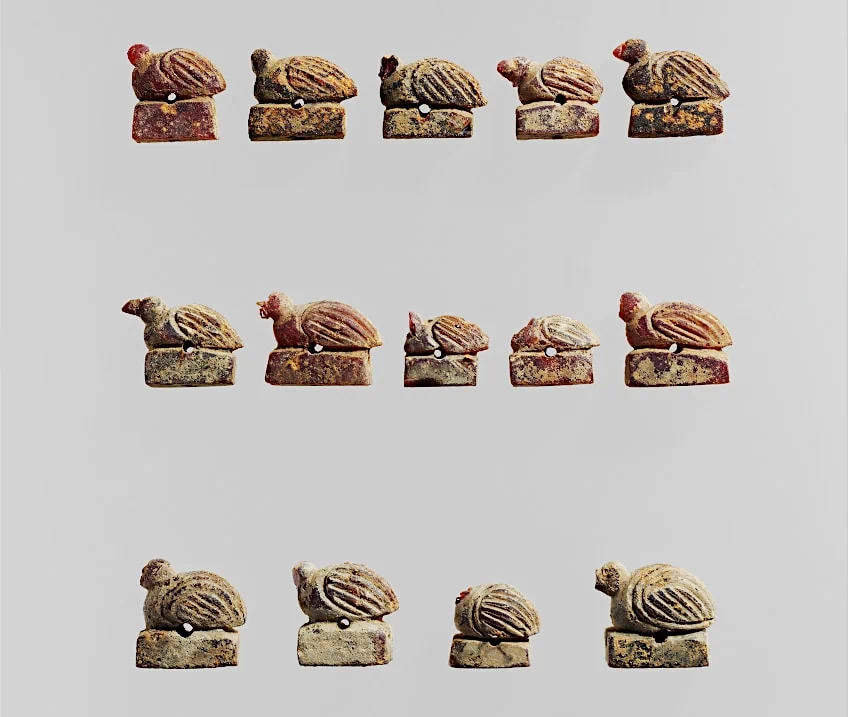 Italic quail-shaped amber beads from an apron-like garment (7th Century BCE); Metropolitan Museum of Art, CC0, via Wikimedia Commons
Italic quail-shaped amber beads from an apron-like garment (7th Century BCE); Metropolitan Museum of Art, CC0, via Wikimedia Commons
Worship of the Titaness Asteria
Asteria was described by Callimachus as the ‘most holy of islands’, and Delos was held as the most beloved isle of Apollo whom Asteria helped birth and nurse. Delos is described as somewhere “not Enyo nor Hades nor the horses of Ares” could tread, and an “island of incense” and many altars and prayers that ships ‘did not speed past’.
Indeed, Delos was an isle “full of altars” of various gods and was sacred to Asteria, Leto, Apollo, and Artemis, who were known as Delian gods.
Delos was a rocky land “more suited to gulls” but became a cultural center of the Aegean Sea for trades and meetings. The importance of Delos as a commercial port was evident, but it also held specific cultural importance for the Greeks. The four gods mentioned above, alongside Dionysus, were worshiped at the isle for nearly a thousand years, from around 900 BCE, and eventually became a pilgrimage sight as well. We know from Iamblichus that there were ‘Delian Mysteries’ similar to the Eleusinian Mysteries at Delos, which implies their cults had a tradition of secret rites or initiation and rituals performed on the isle. The isle was also cleared of all dead many times as a means of purifying the land so it was fit for the gods.
 Attic red-figure column-krater with a depiction of Artemis and Apollo either side of an altar and palm tree signifying Delos (450 BCE); National Archaeological Museum, CC BY 2.5, via Wikimedia Commons
Attic red-figure column-krater with a depiction of Artemis and Apollo either side of an altar and palm tree signifying Delos (450 BCE); National Archaeological Museum, CC BY 2.5, via Wikimedia Commons
Mentions of how Asteria herself was revered are thin, however, she may have been associated with Brizo, a Delian goddess of slumber and known for nighttime oracles through dreams. Brizo was noted as a guardian of seafarers and fishermen, and Greek women would send offerings of food to Brizo in small boats.
One source notes that her close associations, Apollo and Hekate, both have ties with divination. Apollo holds domain over the heavenly oracles of Delphi and Hekate’s famous knowledge of magic and nocturnal necromancy as oracular discussions with ghosts.
Asteria’s abilities were generally believed to be connected to shooting stars, divinations of the night through astrology and necromancy, and perhaps magics of the old and dark kinds. This also identifies her with Pasiphae of Thalamai and her temple, a goddess purported to send prophetic dreams and had a dual role as a goddess of sky and sea, similar to Asteria’s celestial and island connections.
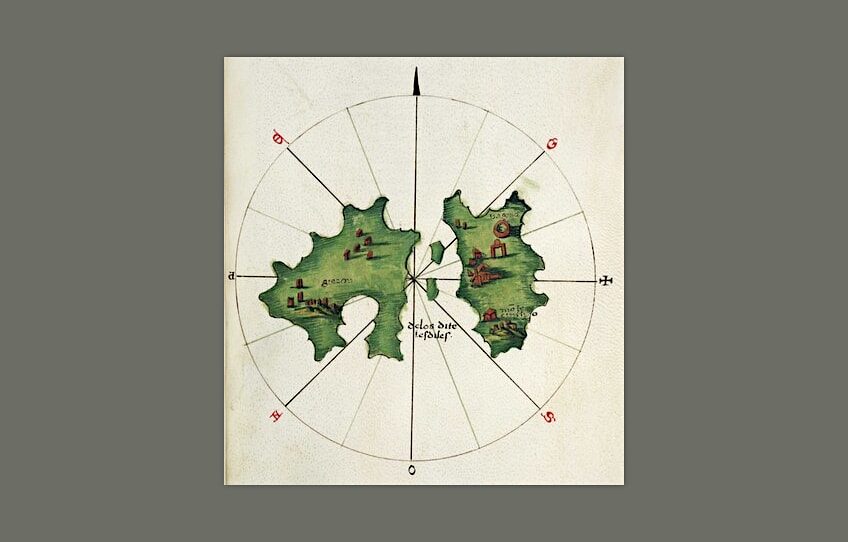 Map on vellum showing the island of Delos with location of scared precincts (c. 1485); Sonetti, Bartolommeo dalli, Public domain, via Wikimedia Commons
Map on vellum showing the island of Delos with location of scared precincts (c. 1485); Sonetti, Bartolommeo dalli, Public domain, via Wikimedia Commons
And while we know little of how it was done, her exaltation by Apollo and his cult and the importance of the Isle of Delos has ensured her reverence for centuries. Asteria as Delos may also have been viewed as a goddess of childbirth or protection, like her sister Leto and niece Artemis whom she was revered alongside, though there is no evidence of this. While those who honor the goddess and her mysteries are few in the modern day, her myths have inspired centuries of art and literature.
Lessons from the Titaness of Falling Stars
The story of the Greek goddess Asteria can be seen in our day as a message to hold fast to your personal code, and to do what you feel is right in a world full of selfish and cruel actions. Asteria made her decision regarding Zeus, even turning into a barren isle that could never put down roots anywhere in the unforgiving buffeting waves. But it is her sacrifice that earns her Hera’s respect and regard. She ignores the order of Hera in giving Leto a place to finally give birth and tells Hera to her wrath down on Asteria alone. For her previous sacrifice, Hera leaves them be, and for her protection and nursing where no one else would help, she is honored above all others by Apollo.
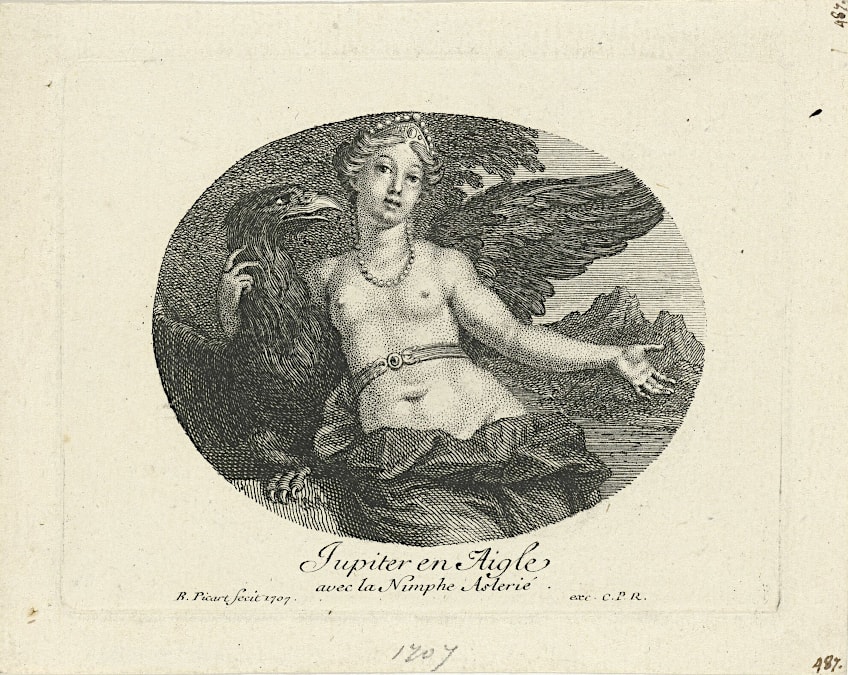 Asteria and Jupiter(Zeus) by Bernard Picart (1707); Rijksmuseum, CC0, via Wikimedia Commons
Asteria and Jupiter(Zeus) by Bernard Picart (1707); Rijksmuseum, CC0, via Wikimedia Commons
Asteria shows one to live your life according to your code, and that doing good for others will be rewarded by them doing good for you in your own time of need. She teaches us to be fearless in our compassion and to never compromise on ourselves. Asteria did what was right rather than what was easy and shows us that good one day given is good one day received.
Wishing on shooting stars might not be what Asteria is about, as she is a powerful Titan seemingly determined to live her life as she wants. Through their beauty, however, one can remember Asteria’s brilliance in defiance and benevolence in wise compassion. One can find much enlightenment in the stories of this goddess of the stars and her prophetic domain, and the echo of her spirit shines a strong guiding light even to this very day.
Frequently Asked Questions
What Was the Significance of Asteria?
The Greek goddess Asteria is believed to be a Titaness with connections to oracles and falling stars. She became an island called Delos to escape Zeus’ desire, which spared her Hera’s retribution. However, she later became the only land to defy Hera’s orders and allow Leto to birth Artemis and Apollo. These deities, though mostly Apollo, held Delos as a most sacred island, and it became an important site for worship, trade, and culture.
What Are Asteria’s Symbols?
Asteria’s three main associated symbols are intrinsically connected to questioning what is Asteria the goddess of. As a goddess of the stars, she is often depicted with them, and falling stars are attributed to be her influence. In Asteria’s myths, she transforms into a quail and then an island in order to escape Zeus. As such, the quail is considered her sacred animal and as the eponymous goddess of the island of Delos, the island itself is a symbol of her.

I am deeply passionate about history and am constantly fascinated by the rich and complex stories of the past. As the editor-in-chief of learning-history.com, I have the opportunity to share this passion with a wide audience through the creation and distribution of engaging and informative content about historical events, persons, and cultures. Whether it’s through writing articles and blog posts or creating videos or podcasts, I strive to bring the past to life in a way that is both accurate and enjoyable. My expertise in history, combined with my strong writing and communication skills, allows me to effectively communicate complex historical concepts and make them accessible and interesting to a wide range of readers. I am truly grateful for the opportunity to share my love of history with others through my work on learning-history.com.

